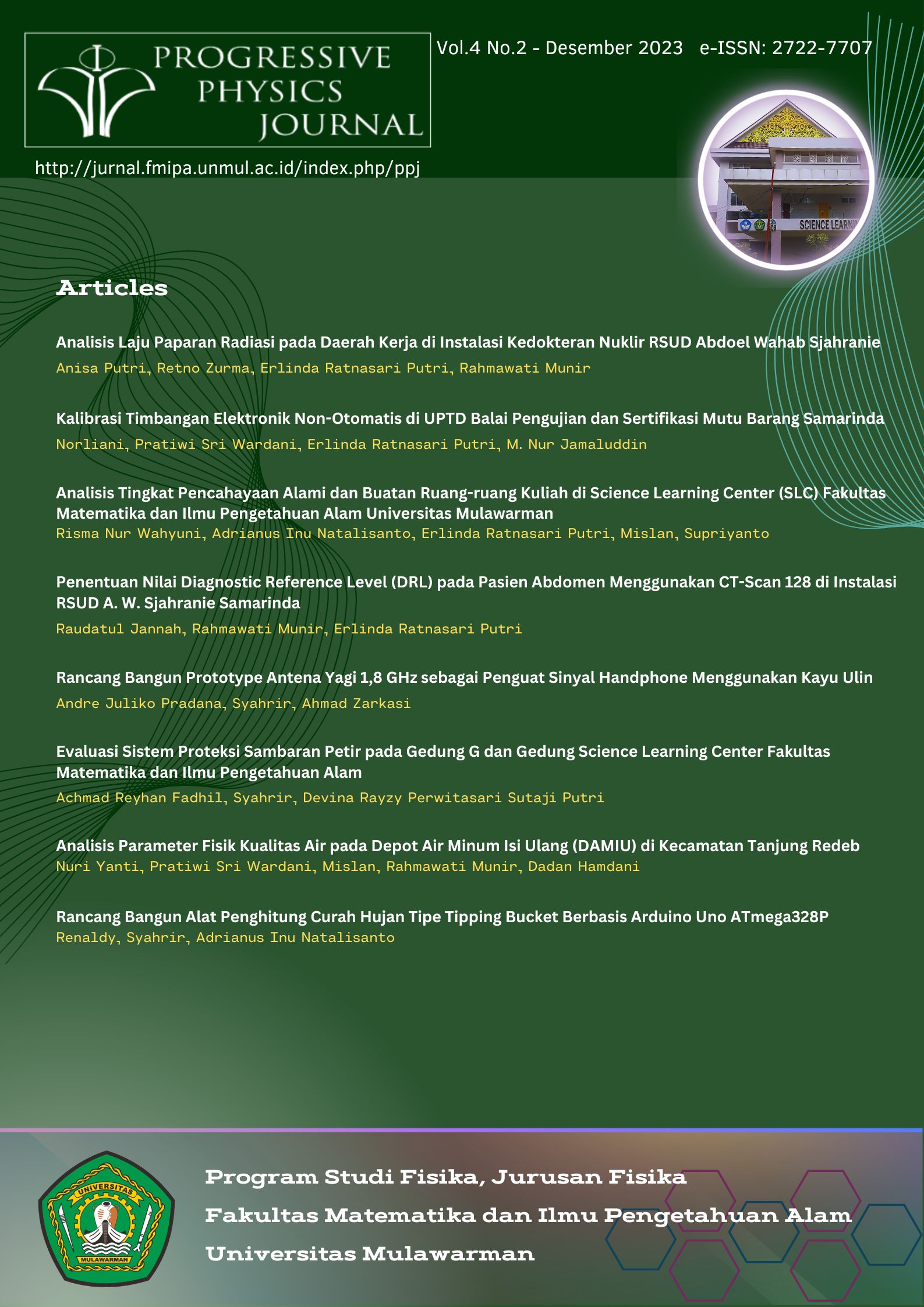Rancang Bangun Prototype Antena Yagi 1,8 Ghz Sebagai Penguat Sinyal Handphone Menggunakan Kayu Ulin
DOI:
https://doi.org/10.30872/ppj.v4i2.1030Keywords:
Yagi Antenna, Download, UploadAbstract
This study was done to develop a Yagi antenna for a 1.8 GHz mobile phone using ironwood as a signal booster as an alternative for some local communities. Designing a Yagi antenna for this study's initial phase, which took place at FMIPA Mulawarman University's Electronics and Instrumentation Laboratory, involved considering its size and range. The boom length is 1 m, the driven length is 7.9 cm, the reflector length is 8.4 cm, and the director length is 7.5 cm after calculating the length and distance of the Yagi antenna parts. The distances between the elements are as follows: 4.1 cm separates the reflector from the driven, 2.5 cm separates the driven from director 1, 3.3 cm separates director 1 from director 2, and 4.1 cm separates directors 3 through 9 from each other. The download signal (receiver) and upload signal were the characteristics used in data collection on Batu Besaung, Samarinda, and East Kalimantan (transceiver). During the course of this data collection, ten maximum data collection points were taken in each of the compass' eight directions. In the final step, data processing is done to find out how much gain the designed Yagi antenna produces. The highest rates recorded are 2,27 Mbps download (receiver) and 2,59 Mbps upload (transceiver), both measured at noon at the tenth point and in the south.







